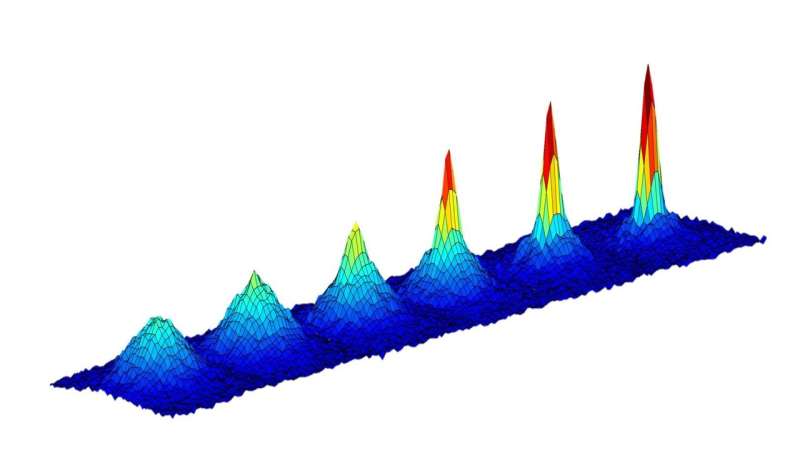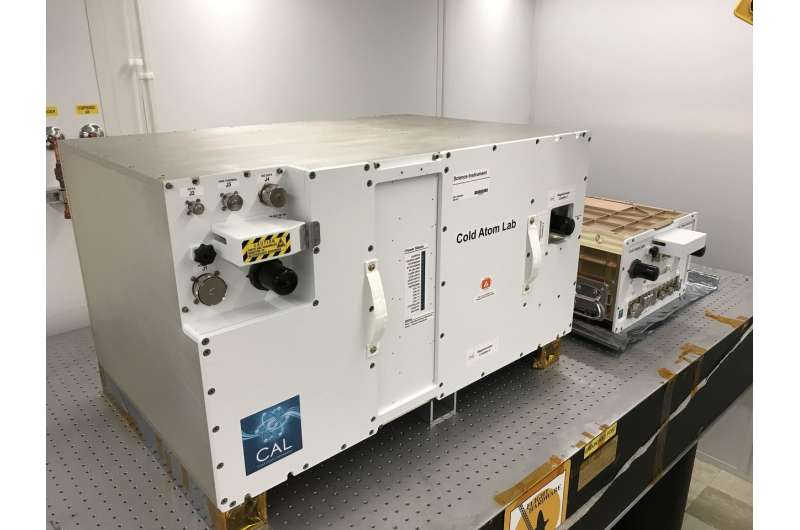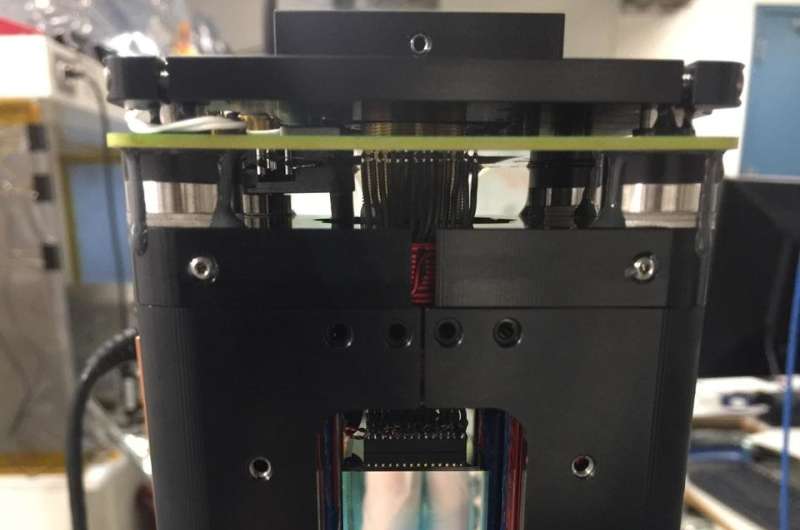Space station experiment reaches ultracold milestone

The International Space Station is officially home to the coolest experiment in space.
NASA's Cold Atom Laboratory (CAL) was installed in the station's U.S. science lab in late May and is now producing clouds of ultracold atoms known as Bose-Einstein condensates. These "BECs" reach temperatures just above absolute zero, the point at which atoms should theoretically stop moving entirely. This is the first time BECs have ever been produced in orbit.
CAL is a multiuser facility dedicated to the study of fundamental laws of nature using ultracold quantum gases in microgravity. Cold atoms are long-lived, precisely controlled quantum particles that provide an ideal platform for the study of quantum phenomena and potential applications of quantum technologies. This NASA facility is the first of its kind in space. It is designed to advance scientists' ability to make precision measurements of gravity, probing long-standing problems in quantum physics (the study of the universe at the very smallest scales), and exploring the wavelike nature of matter.
"Having a BEC experiment operating on the space station is a dream come true," said Robert Thompson, CAL project scientist and a physicist at NASA's Jet Propulsion Laboratory in Pasadena, California. "It's been a long, hard road to get here, but completely worth the struggle, because there's so much we're going to be able to do with this facility."

CAL scientists confirmed last week that the facility has produced BECs from atoms of rubidium, with temperatures as low as 100 nanoKelvin, or one ten-millionth of one Kelvin above absolute zero. (Absolute zero, or zero Kelvin, is equal to minu 459 degrees Fahrenheit, or minus 273 degrees Celsius). That's colder than the average temperature of space, which is about 3 Kelvin (minus 454 degrees Fahrenheit/minus 270 degrees Celsius). But the CAL scientists have their sights set even lower, and expect to reach temperatures colder than what any BEC experiments have achieved on Earth.
At these ultracold temperatures, the atoms in a BEC begin to behave unlike anything else on Earth. In fact, BECs are characterized as a fifth state of matter, distinct from gases, liquids, solids and plasma. In a BEC, atoms act more like waves than particles. The wave nature of atoms is typically only observable at microscopic scales, but BECs make this phenomenon macroscopic, and thus much easier to study. The ultracold atoms all assume their lowest energy state, and take on the same wave identity, becoming indistinguishable from one another. Together, the atom clouds are like a single "super atom," instead of individual atoms.
Not a simple instrument
"CAL is an extremely complicated instrument," said Robert Shotwell, chief engineer of JPL's astronomy and physics directorate, who has overseen the challenging project since February 2017. "Typically, BEC experiments involve enough equipment to fill a room and require near-constant monitoring by scientists, whereas CAL is about the size of a small refrigerator and can be operated remotely from Earth. It was a struggle and required significant effort to overcome all the hurdles necessary to produce the sophisticated facility that's operating on the space station today."

The first laboratory BECs were produced in 1995, but the phenomenon was first predicted 71 years earlier by physicists Satyendra Nath Bose and Albert Einstein. Eric Cornell, Carl Wienman and Wolfgang Ketterle shared the 2001 Nobel Prize in Physics for being the first to create and characterize BECs in the lab. Five science groups, including groups led by Cornell and Ketterle, will conduct experiments with CAL during its first year. Hundreds of BEC experiments have been operated on Earth since the mid-1990s, and a few BEC experiments have even made brief trips to space aboard sounding rockets. But CAL is the first facility of its kind on the space station, where scientists can conduct daily studies of BECs over long periods.
BECs are created in atom traps, or frictionless containers made out of magnetic fields or focused lasers. On Earth, when these traps are shut off, gravity pulls on the ultracold atoms and they can only be studied for fractions of a second. The persistent microgravity of the space station allows scientists to observe individual BECs for five to 10 seconds at a time, with the ability to repeat these measurements for up to six hours per day. As the atom cloud decompresses inside the atom trap, its temperature naturally drops, and the longer the cloud stays in the trap, the colder it gets. This natural phenomenon (that a drop in pressure also means a drop in temperature) is also the reason that a can of spray paint gets cold when the paint is sprayed out: the can's internal pressure is dropping. In microgravity, the BECs can decompress to colder temperatures than any earthbound instrument. Day-to-day operations of CAL require no intervention from the astronauts aboard the station.
In addition to the BECs made from rubidium atoms, the CAL team is working toward making BECs using two different isotopes of potassium atoms.
CAL is currently in a commissioning phase, in which the operations team conducts a long series of tests to fully understand how the CAL facility operates in microgravity.
"There is a globe-spanning team of scientists ready and excited to use this facility," said Kamal Oudrhiri, JPL's mission manager for CAL. "The diverse range of experiments they plan to perform means there are many techniques for manipulating and cooling the atoms that we need to adapt for microgravity, before we turn the instrument over to the principal investigators to begin science operations." The science phase is expected to begin in early September and will last three years.
The Cold Atom Laboratory launched to the space station on May 21, 2018, aboard a Northrop Grumman (formerly Orbital ATK) Cygnus spacecraft from NASA's Wallops Flight Facility in Virginia. Designed and built at JPL, CAL is sponsored by the International Space Station Program at NASA's Johnson Space Center in Houston, and the Space Life and Physical Sciences Research and Applications (SLPSRA) Division of NASA's Human Exploration and Operations Mission Directorate at NASA Headquarters in Washington.
More information: For more information about the Cold Atom Lab, visit coldatomlab.jpl.nasa.gov/
Provided by Jet Propulsion Laboratory





















